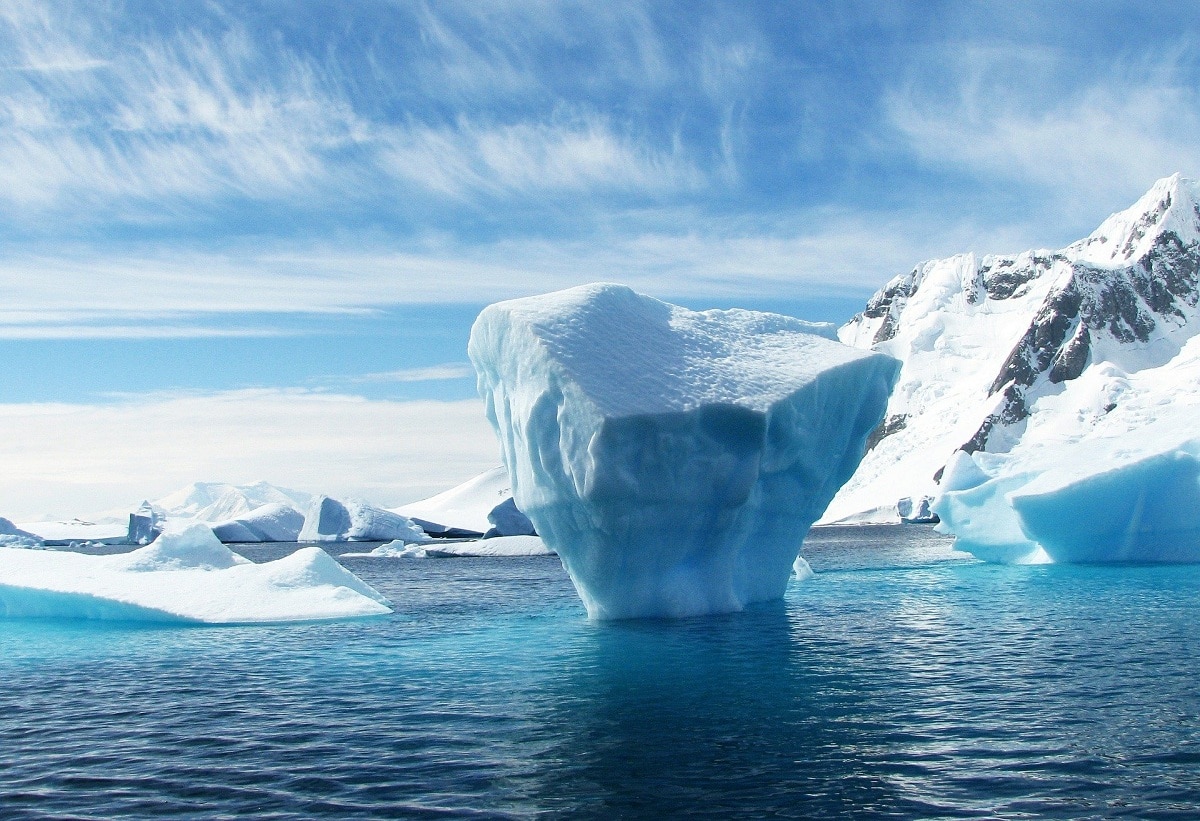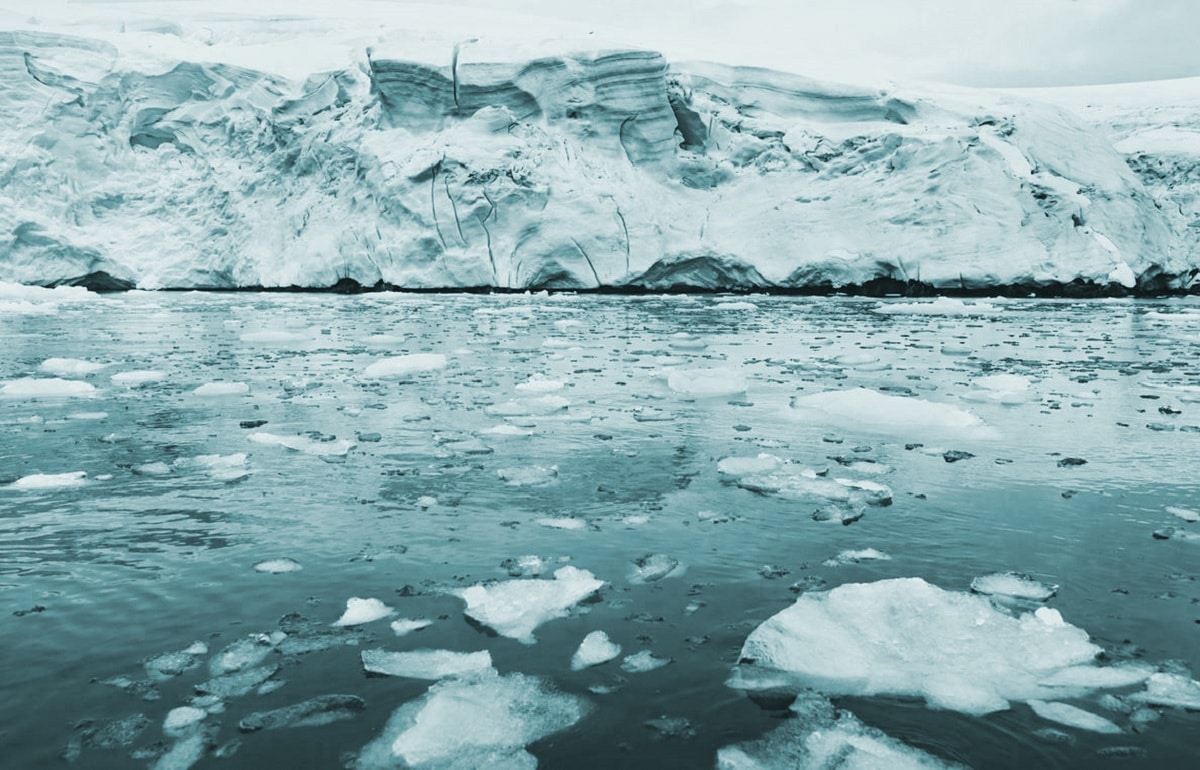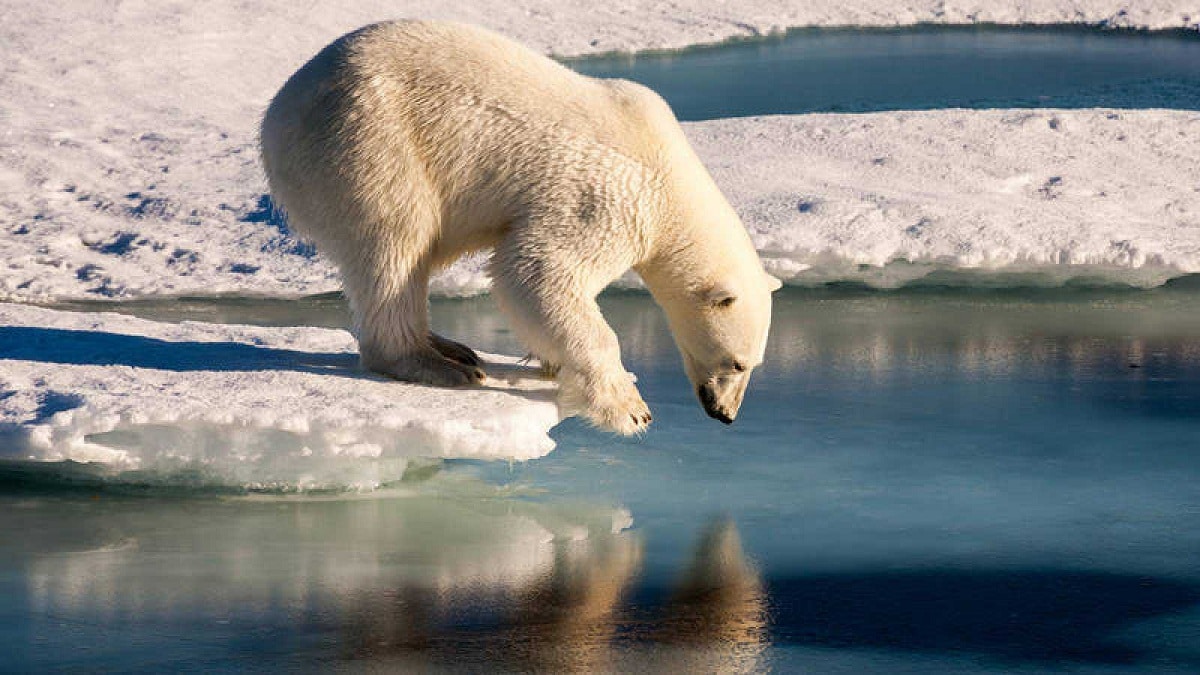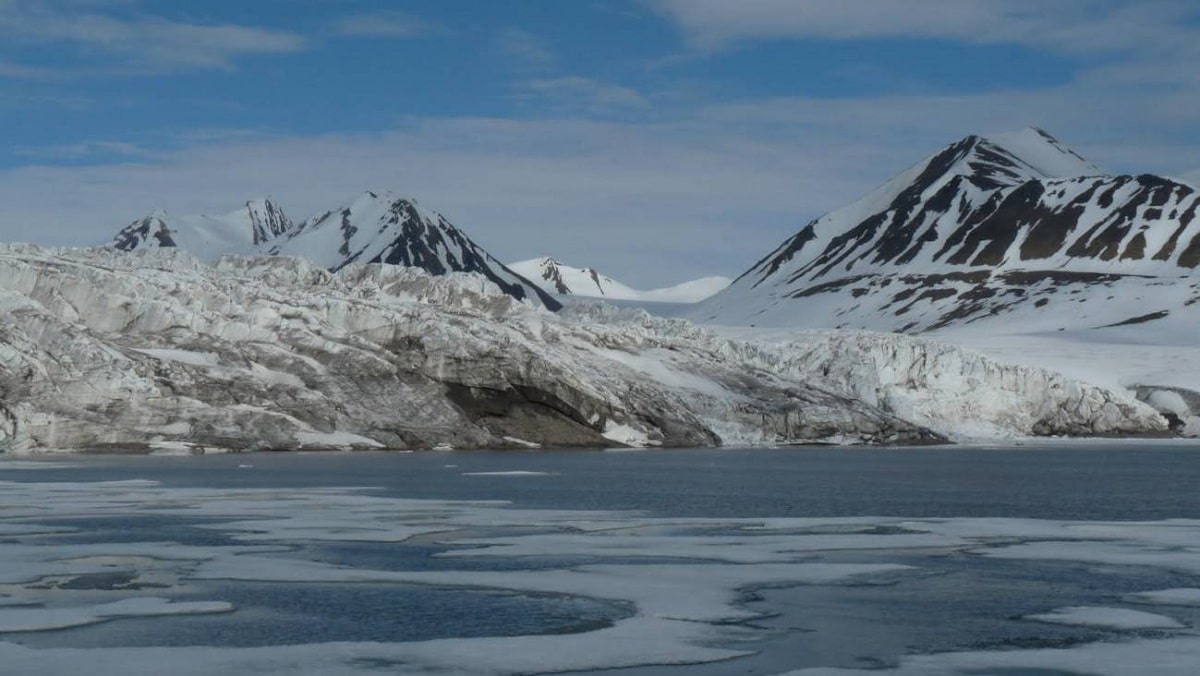
El glacial Arctic Ocean It is the one that is found in the northernmost part of our planet. I have considered it the coldest ocean since most of its waters are covered by a huge mass of ice. With climate change this is changing. The ice sheets are melting more and more, rendering all life forms that are adapted to these harsh conditions unable to survive.
In this article we are going to tell you everything you need to know about the Arctic glacial ocean, its characteristics and fauna.
Key features

The main difference between this and the Antarctic Ocean is that it has a continental shelf on which the ice is found. Since the ice continues to melt at this rate, Antarctica will cause the sea level to rise. The Arctic glacial ocean has no continental shelf, only icy water. This caused the frozen debris to float in the central waters. These large blocks of ice are surrounded by the entire ocean in summer and winter, and as the water freezes, it increases in thickness.
It is located in the northern hemisphere closest to the Arctic Circle. It is restricted to areas near Asia, Europe, and North America. It crosses the Atlantic Ocean through the Strait of Fram and the Barents Sea. It also borders the Pacific Ocean through the Bering Strait and the entire coastal coastline of Alaska, Canada, northern Europe, and Russia.
Its main depth is between 2000 and 4000 meters. It has a total area of about 14.056.000 square kilometers.
Formation and climate of the Arctic glacial ocean

Although the formation of this ocean is not well understood, it is believed that it was formed a long time ago. Extreme environmental conditions make studying this ocean difficult. Eskimos have lived here for about 20.000 years. These people have known how to adapt to the extreme climatic conditions of these places. They have passed on the necessary knowledge from generation to generation to be able to adapt to life in these places.
Fossils found in this ocean show evidence of permanently frozen organic life. It is estimated that about 70 million years ago, its conditions were the same as in the Mediterranean today. It was during certain times and geological periods that this ocean was completely discovered without any ice.
The average temperature of this ocean in winter drops to -50 degrees, making it difficult to survive in this place. The polar climate is one of the coldest on earth, which translates into a more or less persistent and very low annual temperature. It is mainly divided into two seasons, each season is about 6 months. We are going to analyze the two stations that are in the Arctic Ocean:
- Summer: In the summer months, the temperature fluctuates around 0 degrees, and there is continuous sunlight from the sun 24 hours a day. There is also a continuous snow haze that prevents the ice from melting completely. From the beginning of summer, there will be weak cyclones with rain or snow.
- Winter: The temperature reaches -50 degrees, and there is an eternal night. At this time of year, the sun is not visible at any time. The sky is clear and the weather is stable. This is because there is no influence from sunlight.
We must not forget that the main reason for the existence of meteorological phenomena is the effect of sunlight. Therefore, in winter, the weather conditions are very stable. Due to the effects of climate change and global warming, the temperatures of the summer months are rising more and more, causing an almost complete melting of the entire Arctic Ocean.
Flora and fauna of the Arctic glacial ocean

Although this ocean is in extreme conditions, there are still many mammals adapted to these environments. Most have white fur, which can camouflage itself and withstand the cold. There are around 400 species of animals that have adapted to the severe cold of the area. The most famous of these is that we have 6 species of seals and sea lions, various types of whales and polar bears, the best known.
There are also small mollusks called krills, which play a vital role in the marine ecological pyramid. The vegetation is very sparse, with almost no moss or lichens. The ice sheet formed in the Arctic Ocean is a huge frozen block. The surface of non-water bodies doubles in winter and is surrounded by icy water in summer. These caps are usually 2 to 3 meters thick and constantly moving through the water and the wind of Siberia. Finally we can see that some ice cubes collide with each other and completely merge. This creates a sunken ridge whose thickness is more than three times the thickness of the originally formed cap.
It can be said that the salinity of this ocean is the lowest on the planet. This is because the amount of evaporation is very low and the melted fresh water affects the amount of evaporation.
Threats
It is estimated that 25% of the world's reserves of oil, natural gas, tin, manganese, gold, nickel, lead and platinum are in this ocean. This means thawing can use these resources as energy and tactical areas that are vital for the future. This ocean is the largest freshwater natural reserve in the world. Its thaw is causing its imminent demise.
The Arctic ice sheet acts as a global refrigerator, reflecting the sun's heat back into space and keeping the earth cool. Although what happens in the Arctic will affect the entire planet, this space is one of the least protected and vulnerable to many threats.
In the last 30 years, three-quarters of the Arctic's floating ice caps have disappeared. Destruction of ice has made the Arctic glacial ocean a more suitable place for navigation and has exposed it to large-scale fishing and the exploitation of oil, natural gas and minerals. These situations have produced various conflicts of interest, some even serious military conflicts.
In addition to local changes that will directly affect Arctic biodiversity and livelihoods, there will also be 'far-reaching' changes that will affect different parts of the earth, such as Spain, where our natural habitat will be affected by the increase in the temperatures.
I hope that with this information you can learn more about the Arctic glacial ocean and its characteristics.